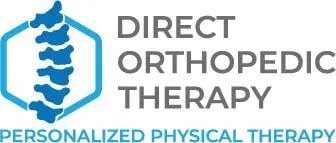If you’re dealing with that deep, nagging pain that shoots down your leg or leaves your lower back feeling like it’s constantly on fire, you’re not alone — and you’re not crazy. Sciatica pain can be relentless, confusing, and just plain frustrating. The worst part? It tends to show up when you’re trying to do everyday things like sitting at your desk, standing in line, or even getting out of bed.
At Direct Orthopedic Therapy, we hear this story all the time. You’ve Googled solutions, tried stretching, maybe even popped a few pain pills, and yet, nothing sticks. That’s where we come in. Physical therapy for sciatica isn’t just about temporary relief — it’s about fixing the root problem.
Understanding Sciatica: What’s Actually Happening?
First off, let’s clear up a common misconception: sciatica isn’t a condition on its own. It’s a set of symptoms caused by something irritating or compressing your sciatic nerve — the longest nerve in your body, running from your lower spine down the back of each leg.
The sciatic nerve starts in the lumbar spine, runs through the pelvis, and branches out into each leg. When something pinches or inflames this nerve, that sharp, burning, or radiating pain kicks in. It can range from a mild ache to a full-on electric shock sensation.
That’s why treating sciatica means more than just easing symptoms. It means understanding what’s causing the nerve irritation in the first place — and targeting it with the right movement, strength, and alignment strategies.
What Causes Sciatica? (Spoiler: It’s Not Just One Thing)
Sciatica can be sneaky, and it doesn’t come from one clear source. Here are the most common culprits we see in the clinic:
1. Herniated or Bulging Discs
This is the number one cause. When one of the discs in your spine pushes out of place, it can press directly on the sciatic nerve.
2. Spinal Stenosis
As we age, the spaces in our spine can narrow, putting pressure on nerves — especially during walking or standing.
3. Piriformis Syndrome
This lesser-known condition happens when the piriformis muscle (located in your buttocks) spasms and compresses the sciatic nerve. Fun fact: this condition mimics sciatica but isn’t true nerve compression.
4. Degenerative Disc Disease
Wear-and-tear on spinal discs can lead to chronic inflammation and pressure around the nerve roots.
5. Lifestyle Factors
Too much sitting, poor posture, heavy lifting with bad form, and lack of core strength all play a role. Even how you sleep can aggravate your sciatic nerve.
6. Pregnancy
Yes — carrying extra weight and a shifting center of gravity can irritate the sciatic nerve, especially in the third trimester.
7. Nerve-Related Conditions
Diabetes, tumors, or trauma can also contribute, though these are less common.
Diagnosing Sciatica: What You Should Know Before You Panic
It’s tempting to self-diagnose using the internet, but not all leg or back pain equals sciatica. Here’s what we look for:
- Pain that radiates from your lower back down your buttock and into one leg.
- Numbness or tingling in the leg or foot.
- Weakness in the affected leg.
- Pain that gets worse when sitting or standing for long periods.
If your symptoms match, that’s a big clue. But to get it right, we often collaborate with your physician to review imaging (like an MRI or X-ray) and do physical tests like the Straight Leg Raise Test.
Red Flags? Here’s When to Seek Immediate Help:
- Loss of bowel or bladder control
- Sudden, severe weakness in both legs
- Significant numbness around the inner thighs (saddle anesthesia)
These could indicate cauda equina syndrome, which is a medical emergency.
How Physical Therapy Treats Sciatica (The Right Way)
Now for the good stuff. Physical therapy is one of the most effective and non-invasive treatments for sciatica. It’s not just stretching (though yes, we stretch). At Direct Orthopedic Therapy, our approach is custom-built to address the root issue.
Here’s what that looks like:
1. Movement Assessment
We check how you move, stand, bend, and sit — because your posture, joint mobility, and muscular imbalances tell us where the real issue lies.
2. Targeted Manual Therapy
Hands-on treatment to release tight muscles, realign joints, and improve circulation to the affected area.
3. Neural Mobilization Techniques
We help “unstick” the sciatic nerve so it can glide and move like it’s supposed to.
4. Strength & Stability Training
Core and glute strength is essential. We focus on restoring muscle balance to reduce future flare-ups.
5. Education
Knowing what to avoid (and what not to fear) is huge. We coach you through proper lifting, sleeping, sitting, and standing techniques.
At-Home Care Tips You Can Try Today
If you’re not quite ready to book an appointment, there are still things you can do right now to take the edge off your pain:
- Use ice in the first 48 hours, then switch to heat for muscle tightness.
- Try the “McKenzie press-up” for disc-related sciatica.
- Avoid long periods of sitting — use a standing desk or take breaks often.
- Keep moving. Bed rest is one of the worst things you can do for sciatica.
How to Prevent Sciatica from Coming Back
Long-term relief doesn’t just come from fixing the problem — it comes from making small, consistent changes. Here’s how we help patients stay pain-free:
- Improve core strength to take the pressure off your spine.
- Increase hip mobility, especially if you sit a lot.
- Fix your posture, both while sitting and standing.
- Learn proper lifting mechanics — your back will thank you.
- Incorporate regular stretching, particularly for your hamstrings, piriformis, and lower back.
Even small tweaks in your day-to-day habits can prevent major pain later.
Ready to Finally Feel Relief?
Here’s the truth: sciatica doesn’t have to be your new normal. We help people walk into our clinic hunched over in pain and leave standing tall again. You just need the right team, a clear plan, and guidance you can trust.
At Direct Orthopedic Therapy, we don’t do cookie-cutter treatments. We treat the person, not just the symptoms. If you’re tired of band-aid solutions, let’s fix this together.
Book your consultation today and take the first step toward getting your life back — without surgery, without endless medication, and without guessing.



